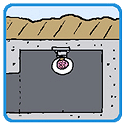|
This has something to do with bankrupting the French state as well.
|
|
|
|

|
| # ? Jun 10, 2024 09:41 |
|
EvanSchenck posted:Coolness HEGEL SMOKE A J posted:Awesome Sweet! Thanks, guys. I have some elderly relatives who whine about my cousins and me being dirty heathens, going on about our family always being Catholic, so suck on this, Tante Marion! Everyone posted:Revolutionary war goodnes Excellent, thanks. I always figured it was a load of crap, but I never bothered to follow up on it. Since I'm asking dumb questions anyway : So I'm reading The Mongoliad (which I'm assuming is mostly made up, except for the fighting bits which I know they actually looked at fechtbueche for), and it go me to thinking. How bad were the Mongols, in terms of how hosed was a random dirt farmer in lands they were invading? Not only in terms of initial burning and such during the invasion, but after the Mongols won. Preferably, this would be both in absolute terms and relative to how hosed dirt farmers would be when invaded by anyone else. Also, more specifically, the book mentions the Mongols doing mass-execution via covering people in planks and then riding over them with horses. I'm going to guess that this at best apocryphal, but if there's any record of anyone ever doing it, or if anyone historically said they did this, that'd be pretty cool to know. Thank you, Knowledgeable Military History Goons!
|
|
|
|
AgentF posted:So the French had a big hand in US independence and had professional troops on the ground and ships in the harbour and the British were expelled. Did the French ever have any plans to seize the 13 colonies for themselves? With the British gone, was there a chance at a successful takeover? If the French every attempted that they would be fighting the entire colonial population. The British loyalists would surely fight back too.
|
|
|
|
Xiahou Dun posted:How bad were the Mongols, in terms of how hosed was a random dirt farmer in lands they were invading? I am not a Knowledgeable Military History Goon, and worse still, this information comes solely from Dan Carlin's podcasts about the Mongols. With that caveat, the dirt farmer might be hosed if his local government resisted the Mongols. They operated as a reverse Khmer Rouge; if you had skills that they didn't (literacy, artisan, smithing, military leadership), they would assimilate you. If you were Farmer Schmuckatelli, you got axed. Standing by to get corrected hard... e: Genghis' general Jebe was originally one of his defeated opponents who, after capture, admitted to having shot Genghis during the battle. He was offered a generalship in the Mongol army and did pretty well. hogmartin fucked around with this message at 00:38 on Jan 18, 2013 |
|
|
|
Shimrra Jamaane posted:If the French every attempted that they would be fighting the entire colonial population. The British loyalists would surely fight back too. Most of the hard-core British loyalists had already peaced out to NS at that point, but yeah the population would be quite united, I'd guess.
|
|
|
|
HEGEL SMOKE A J posted:Not yet, I think. Their economy had been pretty bad since the Seven Years' War, but if I recall, wasn't it getting involved in our war of independence that ran everything fully into the ground? Also, they didn't want to seize the nascent US, they just wanted to screw the British, which was also why Spain got involved. The final tipping point was Louis XVI and his finance ministers attempting to reform the tax system, which made every landowning noble in France promptly throw a tantrum and the whole tax system shut down and suddenly the French government had no money coming in at all and so they called the Estates-General, and I think that's when Napoleon rode into the throne room with sunglasses on and shot the king while spouting a one-liner. They owed a massive amount of war debt due to the American Revolution, War of Spanish Succession, Seven Years War, and others, but the British owed about the same amount as them. The reason why the French had so much trouble was that they had much worse credit and a completely outdated, barely functional tax system. Farecoal fucked around with this message at 01:33 on Jan 18, 2013 |
|
|
|
AgentF posted:So the French had a big hand in US independence and had professional troops on the ground and ships in the harbour and the British were expelled. Did the French ever have any plans to seize the 13 colonies for themselves? With the British gone, was there a chance at a successful takeover? No. Britain was unable to control the colonies, and they had a much more powerful navy and much greater shipping capacity to move forces to North America and supply them once there. French forces in theater around the time of Yorktown amounted to about something over 10,000 men. This was strategically very important because they were high-quality professionals, they were concentrated, and they could join their force to their Continental Army, but it was obviously grossly insufficient to the much greater task you're proposing. The Brits and their mercenaries came to a peak strength of I think 60,000, plus some number of loyalist militia (20,000 maybe?), and they were unable to keep in control of the vast territory of the colonies. The British could also count on the active support of about 20% of the colonies' population, and the indifference of another 40% (only about 40% of American colonists were active Patriots). The French never contemplated it because it was insanely far beyond their capabilities. They involved themselves because it was an opportunity to land a punishing blow to the British Empire, and that's all they set out to do.
|
|
|
|
Didn't they also get some pretty sweet trade deals with the package, and something about allowing people in Louisiana and other French holdings some amount of freedom to move through the colonies? I have hazy memories of this. But I might be completely full of poo poo. I drink a lot.
|
|
|
|
Xiahou Dun posted:Didn't they also get some pretty sweet trade deals with the package, and something about allowing people in Louisiana and other French holdings some amount of freedom to move through the colonies? I have hazy memories of this. The French didn't get Louisiana (and points north) until they picked it up off the Spanish in 1800 during Napoleon's occupation of Spain. In fact, even though Spain and the US were allied at the end of the Revolutionary war, they quickly began squabbling over just where the borders were and whether or not the US could use the Mississippi river. Fortunately, the Louisiana Purchase settled that question for good, although the Florida border issues weren't fully resolved until 1819.
|
|
|
|
Farecoal posted:The final tipping point was Louis XVI and his finance ministers attempting to reform the tax system, which made every landowning noble in France promptly throw a tantrum and the whole tax system shut down and suddenly the French government had no money coming in at all and so they called the Estates-General, and I think that's when Napoleon rode into the throne room with sunglasses on and shot the king while spouting a one-liner. To add to this, the debt was almost all entirely the Revolutionary War and the naval only strategy France followed up until that point, some 350,000,000 libres if I recall was allocated to the Navy giving them for a time a slight numerical edge over Britain. The debt from the previous wars I think is "there" only to the same extant that the USA's WWII debt is "still there". The French also had a smaller trading empire with less markets and investors. Britain was kinda like the US of today in which so many people felt Britain was such a solid and safe investment that they funneled money into Britain which Britain used to leverage its loans which paid themselves off through their growing trade. There's a few large really fun chapters by Paul Kennedy in his Rise and Fall book that goes into the details its awesome.
|
|
|
|
sullat posted:The French didn't get Louisiana (and points north) until they picked it up off the Spanish in 1800 during Napoleon's occupation of Spain. In fact, even though Spain and the US were allied at the end of the Revolutionary war, they quickly began squabbling over just where the borders were and whether or not the US could use the Mississippi river. Fortunately, the Louisiana Purchase settled that question for good, although the Florida border issues weren't fully resolved until 1819. The Spanish took it off them in the first place, though? The French lost Louisiana in 1763 as part of the Seven Years War peace deal, same time the British took Canada.
|
|
|
|
Lichtenstein posted:Though I really cannot say anything more than you'd find at wikipedia, as I half-remember it from the school, I'd like to point you towards two things. I have of course read the wikipedia article. I did not know about the translated Dlugosz, that's interesting. Rodrigo Diaz posted:I'm not the best on late medieval warfare, but I'll tell you what I can manage... in another post. HEGEL SMOKE A J posted:I can cover the latter part of this as well, and also talk about artillery (
|
|
|
|
Nenonen posted:More importantly, the continental colonies weren't as lucrative as sources of colonial income anymore. The real moneymakers for Europe were the Caribbean colonies. Sugar mostly, but all sorts of cash crops like tobacco and indigo were crazy valuable and an important leg of the Triangular route. The whole "Taxation without Representation" thing that the US got pissy about was actually an attempt by the British to crack down on American merchants who were moving in on the British trans-Atlantic routes and getting super rich off of it; the Molasses Act of 1733 was meant to keep New Englanders from buying lots of Caribbean sugar cane, making rum, and then selling it back in the Caribbean, since that route effectively cut out the British leg of the whole process and could be completed faster and cheaper than the trans-oceanic route. The slaves from Africa to Caribbean, Caribbean crops to Europe, European finished goods to Africa and North America routes were so insanely profitable that something like only 1 in 3 or 1 in 4 trips had to survive in order to turn a profit for merchants. As American shipbuilding in New York and New England started to reach and surpass European quality, the British found themselves responsible for shouldering the cost of the defense of an economic rival that was very willing to bootleg and smuggle to get out of the traditional mercantilist arrangement. It was basically a recipe for inevitable conflict and secession as soon as the Seven Years' War concluded.
|
|
|
|
tallkidwithglasses posted:HEGEL SMOKE A J can I ask you to do a big post on what life was like in early modern German speaking areas? This stuff is fascinating to me and I don't really know much at all about it- my degree is like industrialization forward and so far your posting has been awesome but I'd like a sort of scene-setting post to help me contextualize things. Just chiming in to say that I am currently finishing my master's thesis on politics and policies in an early modern city in northern Germany, so I think I can help out a bit. Is there anything specifically you want to know, since it is such a broad topic?
|
|
|
|
ArchangeI posted:Just chiming in to say that I am currently finishing my master's thesis on politics and policies in an early modern city in northern Germany, so I think I can help out a bit. Is there anything specifically you want to know, since it is such a broad topic? Edit: Which city? What period?
|
|
|
|
HEGEL SMOKE A J posted:I thought I would just broadly cover the political structure of the HRE and what daily life could have been like in a city/city-state, and then segue in later posts to the implications that would have had for what the military looked like. Is there something specific that you would like to do? Rostock, in the second half of the 16th century. They tried to become an imperial free city, but ultimately failed because the councilmen were a bunch of enormous dicks. I'm using a Policeyordnung as my core source, which was basically a big book of laws that tried to codify how every single part of society was supposed to operate and interact. It is a fascinating look into the nuts and bolts of life in an early modern city. The basic idea behind it was that there was a divine order which had become corrupted, and which now had to be restored by removing the corruption. So they put in laws against swearing (don't invoke God's name or he will get pissed and burn our city down you loving rear end in a top hat!), wearing expensive clothes, marrying your cousins and about a billion rules about how the craftsmen had to work, what prices they could take etc. The fun thing is that the craftsmen in Rostock kept pushing to be allowed to take part in running the city, which the council ran by itself otherwise, so these rules are also a way for the council to try and gain control over the craftsmen. Then the duke of Mecklenburg came in with his brother, they played the two sides against each other (with a liberal application siege warfare on the side) and managed to keep the city from gaining its semi-independence. But daily life really covers so much more, from religion to food supply (you were always one lovely summer away from a famine, two from mass starvation) to economy to society. So I guess you go ahead and I will add if I think there is anything to add. It is a military history thread after all.
|
|
|
|
poo poo, this thread moves to fast for me.Shimrra Jamaane posted:Hey, that would have worked. The best part of the ice carrier was: A protoype was build in smaller scale in some Canadian lake. And the only reason the project was abandoned? Someone calculated the slow-as-gently caress carrier would reach the nearest theater-of-war in 1945 earliest if it started moving the day it was finished. Oh, and the ice-like substance used to build it would slowly melt through the summer and the carrier would thus become unusable after just one or two years at best.
|
|
|
|
Morholt posted:Can someone tell me about late medieval European combat? I'm mainly interested in the battle of Grunwald but it is difficult to find reliable accounts of it, not that I would be sure where to start. CBC's Ideas program did a 3-part program called "The Sword Brothers" on Knights/Crusaders. The third one was on the Teutonic Knights and discussed the Polish/Lithuanian-Teutonic War. The focus shifts to the Battle of Grunwald around the 37-minute mark of the program (which can be found here in podcast form) and goes on for about 15 minutes.
|
|
|
|
Soundtrack for this post: Seulkidung "GoSu Cave" The next episode - "The Black Water Dragon III" - of my podcast on The First Great Asian War just hit the feed. quote:Hideyoshi's army continues it's unstoppable thrust north as Seoul, Gaeseong and Pyeongyang fall. But 600km from their base of supply and without naval support has Hideyoshi's army gone too far, too fast?   Despite some technical problems, Artist Wayne Reynolds’ interpretation of the Turtleship is a reasonable starting point for getting a mental image of what it looked like. As I mention in the episode, it almost certainly didn't have plated armour like this (it did have spikes) and the Dragon head was probably pointed straight forward because it had a cannon/smoke machine that could fire out of it's mouth. If angled majestically upright in the way Reynolds shows here, there's no way to shoot a cannon through it's mouth. Reynold's doesn't show the wet grass that would be placed on top of the iron spikes to conceal them and provide fireproofing. Also not depicted is the cross shaped trench running along the roof that would have allowed those inside access to the roof so that they could splash seawater on the grass. (Image Credit Stephen Turnbull)  A scale model of the Turtle Ship at it appears in the War Memorial of Korea in Seoul. This appears to be essentially the same as the Reynolds depiction in Stephen Turnbull’s book. I like this picture because you can see the nearly flat bottom, which allowed the ship to turn on a dime. The Chinese character on the flag says “Turtle”.  The idea that the Turtle Ship DID have iron reinforcements around the gun ports is not unreasonable.  The full size Turtle Ship replica in Yeosu Harbour, former home base of Yi Sunshin.  Artist Wayne Reynolds’ interpretation of the Japanese Atakabune Class battleship (heavy) and the Sekibune Class warship (medium). Note the lack of heavy cannon, it’s firepower is provided almost entirely by musketeers. Compare the lack of heavy cannon to the next pic. The ships are fighting because this is supposed to be a scene from the civil wars not the Korean campaigns. (Image Credit Stephen Turnbull)  Artist Wayne Reynolds' interpretation of The Panokseon in the Battle of Ok Port. The Heaven Class cannons are shooting iron tipped arrows. (Image Credit Stephen Turnbull)  The Yellow Class cannon mounted in a carriage. The smallest of Korean cannons. THE LUMMOX fucked around with this message at 02:45 on Jan 23, 2013 |
|
|
|
I think those might be the coolest ships I've ever seen, its like they're straight out of my 12-year old fantasies
|
|
|
|
Farecoal posted:I think those might be the coolest ships I've ever seen, its like they're straight out of my 12-year old fantasies  Specifically which one? There's 2 Korean and 3 Japanese types in the pictures. Haven't even gotten to China yet. Specifically which one? There's 2 Korean and 3 Japanese types in the pictures. Haven't even gotten to China yet.
|
|
|
|
East Asian pre-modern warships are amazing. Think of them more as fighting platforms than "warships" in the way you might assume. With that in mind it is easier to understand many of the designs looked like rectangular boxes and were prone to get hosed if they were not sailing in fair weather close to a shore. It's like the polar opposite of Viking longships. EDIT: look for example of this painting of probably the most famous sea battle in Japan, Dan no ura.  The ships were extremely flat and really vulnerable to poor weather. Their role was to deliver soldiers into firing range with their bows or hand-to-hand combat. Look at it! "Surfboards" is a more accurate term than "ships". lilljonas fucked around with this message at 11:38 on Jan 22, 2013 |
|
|
|
If all the warships did were ferry men around so they could fight like they did in the field, then why not just fight in the field?
|
|
|
|
Boiled Water posted:If all the warships did were ferry men around so they could fight like they did in the field, then why not just fight in the field? Various reasons. But first of all, sea battles were not that common. I'm not that well read in Chinese history, but in Japanese history they mostly consist of acts of piracy and attacks against pirates (which naturally would take place at sea), defense against naval invasions (such as the Mongol invasions), and blockades or naval support in sieges of coastal fortifications. In the Chinese history that I know of, naval battles are often conducted on rivers, lakes or by the coast, and aimed at countering enemy movement or taking control of trade routes or ways to move armies. In these circumstances it is less important to have fast, manouverable ships that can go far on the open sea. In the case of the previously mentioned Battle of Dan-no-ura, it was fought by sea because the Minamoto clan had consolidated power on the main Japanese island of Honshu, while their enemies in the Taira clan had fled to their homelands on the island of Shikoku. Since the goal of the Minamoto was to invade the Taira homelands and eradicate them, and the Taira wanted to keep the Minamoto out of the island, the battle was fought in the straits that the Minamoto would have to pass through to invade. lilljonas fucked around with this message at 13:31 on Jan 22, 2013 |
|
|
|
Boiled Water posted:If all the warships did were ferry men around so they could fight like they did in the field, then why not just fight in the field? Because all the fields between Japan and Korea or Japan and China are covered in water.
|
|
|
|
Can anyone point me towards books about military police during the 20th century?
|
|
|
|
Thanks liljonas for the explanation, very interesting. The famed fleet of Samurai "little ships" that drove away the Mongol/Chinese/Korean invaders in the 13th century were not actually all that little. I mean, they were tiny compared to ship ships but they're not as small as they appear in the picture above, where they basically look like surfboards.  Boiled Water posted:If all the warships did were ferry men around so they could fight like they did in the field, then why not just fight in the field? Hopefully someone who knows a bit about Sengoku period Japan can provide a more detailed answer to your question cause it's a good one. Makes me wonder about Mediterranean galley combat, since it was almost the same. The larger Korean and Chinese ships were a direct response to Japanese piracy. If the pirates are tenacious as heck and armed to the teeth and your poorly motivated sailors have no hope of resisting, what do you do? You add a second story to your ships so that instead of the pirates being able to easily hop on board from their own ships, now had to throw hooks and climb up an extra two metres or so of wall. Then you give your sailors huge cannons and giant rakes so that they never actually have to face the pirates hand to hand. THE LUMMOX fucked around with this message at 03:25 on Jan 23, 2013 |
|
|
|
THE LUMMOX posted:
I already knew about the turtle ship, although I never knew the dragon-head contained a cannon. The Japanese ships are the ones that seem amazing, they're like floating castles/fortresses, with cannons and musketeers and other cool poo poo. Plus their design is refreshing instead of the same old European frigates and ships of the line. I'm not a Japanophile I swear Farecoal fucked around with this message at 04:11 on Jan 23, 2013 |
|
|
|
I meant to have this finished earlier.
|
|
|
|
I'm looking for recommendations on books focused on artillery history/development/useage/etc, pretty much regardless of era. There are a few interesting looking books on Amazon but often with high cost/few reviews (and I don't really trust most Amazon reviews anyway). This is a free Kindle download so I checked it out. Its got some great information on the early development of cannon and gun drills but then focuses on describing various pieces (very dry, felt like I was reading museum placards). It also has lots of typos, is very brief, and is western focused.
|
|
|
|
What was shipboard combat like during the age of sail? Was it just a free-for-all, or was any of it directed by officers on either ship with formations and such?
|
|
|
|
SlothfulCobra posted:What was shipboard combat like during the age of sail? Was it just a free-for-all, or was any of it directed by officers on either ship with formations and such? You'd generally try to seize key points on the deck - rigging, the wheel, hatches (to prevent the below-decks crew from overwhelming you). Once you have control of the deck you've probably killed or captured the enemy officers and one of them will surrender the ship. If the people below deck refuse to give up then you threaten to set fire to the ship with them trapped on board.
|
|
|
|
SlothfulCobra posted:What was shipboard combat like during the age of sail? Was it just a free-for-all, or was any of it directed by officers on either ship with formations and such? Given the chance defenders and attackers would certainly use formations, especially marines who were trained to fight as infantry. But given that even the largest ships of the era were rarely wide enough for 20 men to stand in line they were limited to a small scale.
|
|
|
|
The prime issue with large fleets was control. You wanted to be able to use your ships in a coordinated manner. This involved signal flags, etc, and hours and hours and hours of coordinated drill. Open sea to drill gave the British a substantial advantage in the Napoleonic wars. It takes hours and hours of drill to be able to bring a large ship about cleanly and quickly, and to do that in a coordinated manner with five or six other ships requires more training still. This wasn't available to the blockaded French navy. Anyhow, you get a lot of instances of guys "misreading" or "not seeing" signal flags because they were pursuing individual prizes. This happens a fair bit. The actual combat aboard a ship in a boarding action was basically a free-for-all on an individual basis. Marines and such had an advantage because they were specifically trained for close quarters combat and were disciplined enough to fire a volley before chaos broke out, but the actual fight would be pretty loving chaotic. Officers being loud and visible was important.
|
|
|
|
KYOON GRIFFEY JR posted:Officers being loud and visible was important.
|
|
|
|
THE LUMMOX posted:Hopefully someone who knows a bit about Sengoku period Japan can provide a more detailed answer to your question cause it's a good one. Makes me wonder about Mediterranean galley combat, since it was almost the same. I have another question about Sengoku Japan, why were they so poo poo at making cannons? They had plenty of exposure to Korean and European guns but never managed to make their own. It doesn't seem like casting a cannon should be much different than casting a bell and I know they could do that. So what gives? What was the technological edge that allowed Koreans to make Swiss Cheese out of Japanese warships? edit: oh and on galley combat, sometimes they did just fight in the field. For example in 479 BC at the Battle of Mycale the Greek navy annihilated the Persian navy in a land battle. Both sides literally just pulled their ships up on shore and fought on land, and the victorious Greeks burned the Persian ships on the beach. Supposedly the battle was fought on the same day as Plataea, although they also supposedly received word of the victory in the middle of the battle which is obviously impossible. Squalid fucked around with this message at 19:32 on Jan 24, 2013 |
|
|
|
Squalid posted:I have another question about Sengoku Japan, why were they so poo poo at making cannons? They had plenty of exposure to Korean and European guns but never managed to make their own. It doesn't seem like casting a cannon should be much different than casting a bell and I know they could do that. So what gives? What was the technological edge that allowed Koreans to make Swiss Cheese out of Japanese warships? Japan doesn't have access to large quantities of iron ore. The little they do have comes from either trade or iron sand deposits. One of the reasons for the high quality of Japanese blades was that the iron workers had to do their best with what they had available before it became too expensive.
|
|
|
|
But aren't most cannons in the period cast from bronze? Of course that might be even more expensive for the Japanese to acquire. Yeah just googling around I found this map of ancient sources of tin: and Japan doesn't seem to have access to local copper either. I hadn't considered that they might just not have access to the resources necessary to produce large guns. Still I know they could cast large bells around the time they invaded Korean and a smooth bore cannon doesn't seem like much of a stretch from there
|
|
|
|
FastestGunAlive posted:I'm looking for recommendations on books focused on artillery history/development/useage/etc, pretty much regardless of era. There are a few interesting looking books on Amazon but often with high cost/few reviews (and I don't really trust most Amazon reviews anyway). Hey, what up. Crossposting from the comment I made in the "Citadel" thread in GBS. These books all deal with early modern Western Europe, my focus: HEGEL SMOKE A J posted:Kenneth Chase, Firearms: A Global History to 1700 HEY GUNS fucked around with this message at 20:46 on Jan 24, 2013 |
|
|
|

|
| # ? Jun 10, 2024 09:41 |
|
Squalid posted:and Japan doesn't seem to have access to local copper either. I hadn't considered that they might just not have access to the resources necessary to produce large guns. Still I know they could cast large bells around the time they invaded Korean and a smooth bore cannon doesn't seem like much of a stretch from there I imagine bells have much looser tolerances for basically all parameters of metal strength than a gun does, so the quality of the material isn't as much of an issue.
|
|
|





























